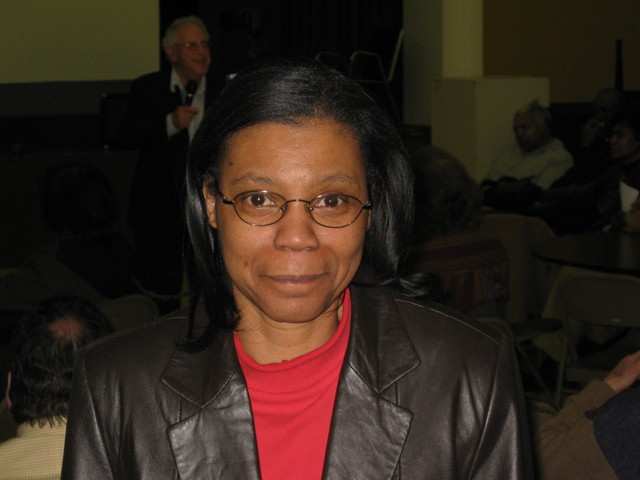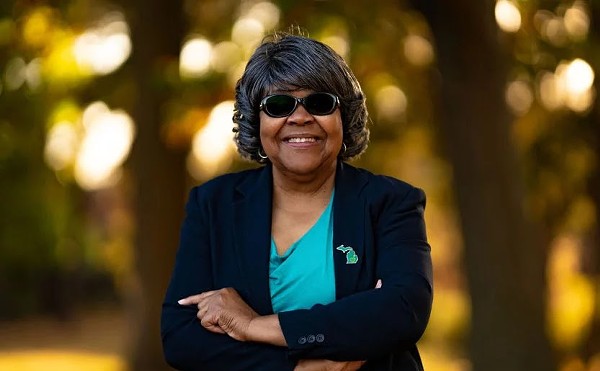Nobody knows when Detroit will bottom out, though the census figures last week indicate things are even worse than we thought. Nobody knows how bleak things will get, in terms of poverty or population flight or urban devastation.
Nor do we know what the worst-case scenario will look like when it arrives. Will Detroit eventually be run by a state-appointed emergency financial manager? Will the city be broken up into smaller pieces? Will areas be abandoned, fenced off, left to coyotes, raccoons and the occasional dying vagrant?
Or will something, somehow, revitalize the city, perk it up, make it grow again, possibly in ways we haven't yet imagined? Everyone is hoping for that. Many are counting on seeing it.
Whether we ever will is another question. Detroit is still in decline, and Gov. Rick Snyder's financial reforms seem likely, even if they are wildly successful at luring new jobs in the long run, to be positively devastating to Detroit in the near future.
Ending the state's Earned Income Tax Credit for the working poor threatens to plunge thousands of Detroiters into poverty. Ending credits for "brownfield redevelopment" may mean, a developer told me, that whatever development is going on in the city will just stop, making the economy worse.
But if we don't know where the devastation will stop, we can name the date when Detroit reached its modern-day zenith, when it was at the peak of its wealth, population and power:
July 28, 1951. That was the day the city kicked out the jams and celebrated its 250th birthday with a historic five-hour parade that had hundreds of thousands lining the sidewalks.
President Harry Truman started things off that brilliant Saturday afternoon with a speech. That was a bigger deal than it sounds today. Presidents didn't travel nearly as much back then. Yet Detroit was seen as worth it; we were the fifth largest city in the nation, and economically even more important.
This big, brawling, muscular city had sprung up between 1900 and 1930, replacing what had been a small town. Detroit put the world on wheels, and then served as the Arsenal of Democracy in World War II, arming the world to defeat fascism, sending trucks and tanks to all the Allied armies.
Detroit was still rich and still growing, after a temporary slowdown during the Great Depression. In 1951, the U.S. Census Bureau reported finding 1,849,568 Detroiters the year before. City fathers were sure they'd soon hit 2 million.
Nobody had heard of a Japanese car. We were killing Chinese in Korea, not buying cars from the Koreans and borrowing money from the Chinese.
Nobody imagined a black majority in Detroit. Negroes, as they were called, were barely a sixth of the population, and mostly rigorously segregated into a couple areas. Some white liberals muttered about that, but nobody else cared very much, except that they wanted to avoid a repeat of the vicious race riot that had occurred eight years before.
Detroiters thought they were the nation's future. They were breaking ground then for what became Cobo Hall, finishing what they would call the City-County Building.
Everyone thought the good times would go on forever. Nobody, but nobody in 1951, could have imagined the picture of sheer urban devastation that is today's Detroit.
Nobody certainly could have imagined the depopulation. Detroit today has barely more than one-third the population it had in 1950. Think of that! The census found a mere 713,777 people left in what urban explorers call the "Ruins of Detroit." In fact, if the trends of the last decade have continued, the population may now be less than 690,000.
Mayor Dave Bing is indignantly contesting that, claiming there are really 750,000 people. Even if he is right, it changes little. Forget the high point. The city has lost half a million people since Detroit managed to lure the Republican National Convention in 1980, the year they nominated Ronald Reagan.
The city has lost half the population it had when Coleman Young was elected. There is also less diversity than there was in the bad old segregated days of the city's early history.
Today, more than four-fifths of the population is black; the white population has virtually disappeared. The Detroit Free Press, perhaps striving for political correctness, did not print racial breakdowns in the census tables it published. But nearly half the city's small white population left over the past decade. Last year, Detroit had a white population of 55,604 souls, some of whom are from other lands.
There are far more white people in Macomb Township. Remember all the feel-good stories about the new urban pioneers, young whites from the suburbs moving back to the city to live in lofts and enjoy an urbane lifestyle?
Yes, maybe there are six of these people. But the trend is in the opposite direction. But the big story of this census has nothing to do with whites. It is massive black flight.
Detroit lost one-quarter of its black population during the decade — a staggering 185,393 people. That, more than anything else, says the city has totally failed, in the sense that the middle class of both races has now given up on the city.
And who can blame them? Living in the city is exhausting, expensive and risky. The schools are so bad few decent parents put their children in them. There is the fear of crime, yes.
But beyond that, there is the lack of good grocery stores; I once saw three Detroit City Council members shopping at Holiday Market in Royal Oak at the same time.
Detroiters have to endure the higher cost of everything, most notably auto insurance, and a painstakingly unresponsive city bureaucracy. I know people who've struggled heroically for years to stay in Detroit, before giving up in exhaustion.
Mayor Dave Bing may be honest, decent, intelligent and true. But he has to struggle with the corruption that came before him, and the effects of an economic holocaust.
So what does the city do now? What can it do?
Finding an answer to that question depends on the honesty and good will of everyone in Michigan, all of whom, believe it or not, have a huge stake in saving Detroit.
Having a huge, bankrupt, desperate slum as the largest city in your state isn't good for business in Grand Rapids.
Not to mention the suburbs. Yes, white racism has played a major role in the city's decline. So has black corruption and stubborn pig-headedness. We need to face and forget all that.
We also need to acknowledge that integration, that great dream of the 1960s, has failed, at least in terms of where people choose to live.
Huntington Woods is less than 1 percent black. Highland Park, barely 10 minutes away, is less than 3 percent white. We aren't going to change that. We are, however, joined at the hip economically, and we're all sinking.
If you could have told one of those Detroiters lining the parade route on July 28, 1951, that his city would one day be a place of devastated buildings with most of the people gone, he would have undoubtedly thought an atom bomb was coming.
In terms of economic impact, he wouldn't have been far wrong. He or she might have said that our task would then be to rebuild Detroit, fixing everything that was wrong.
Not as glamorous, maybe, as flattening Libya. But far more necessary. So let's start.





